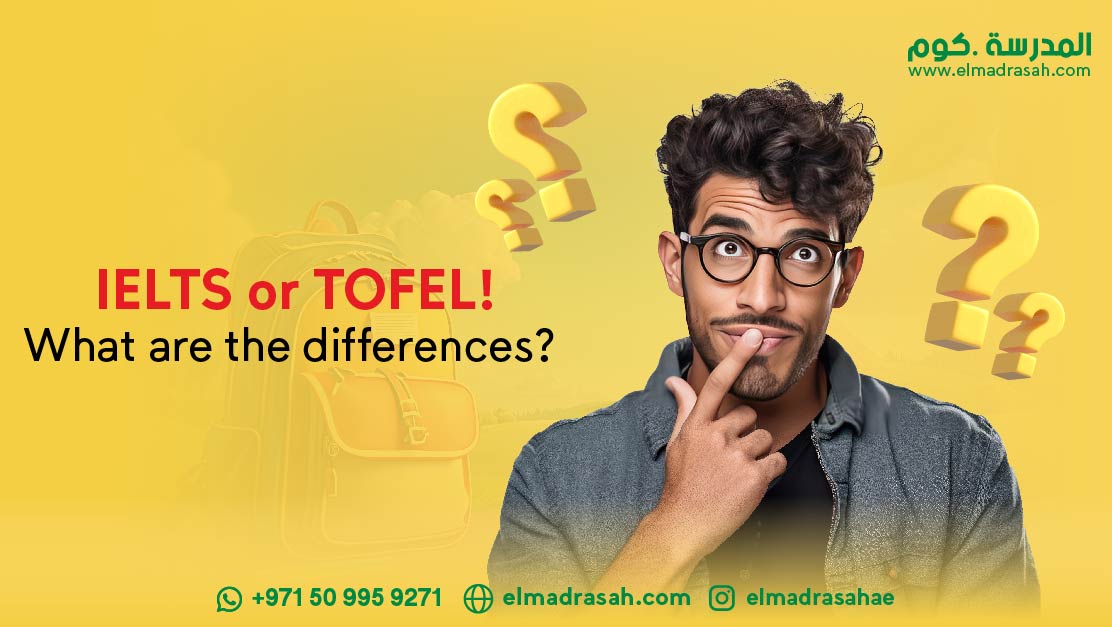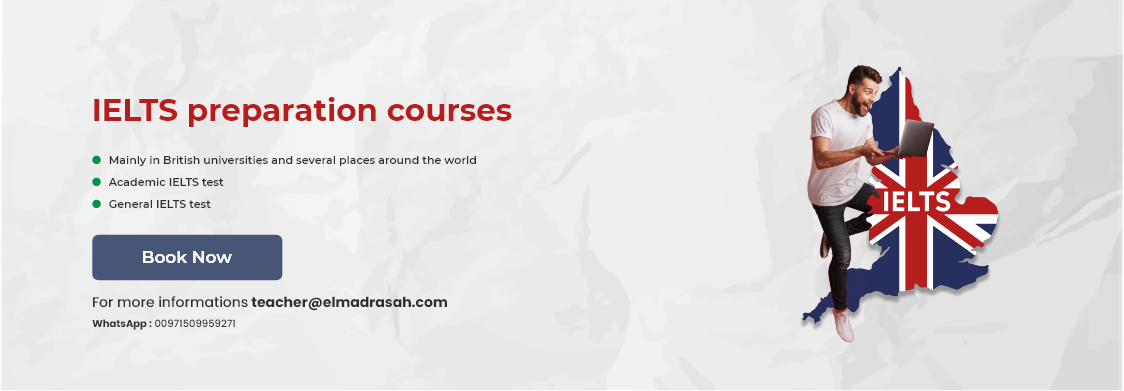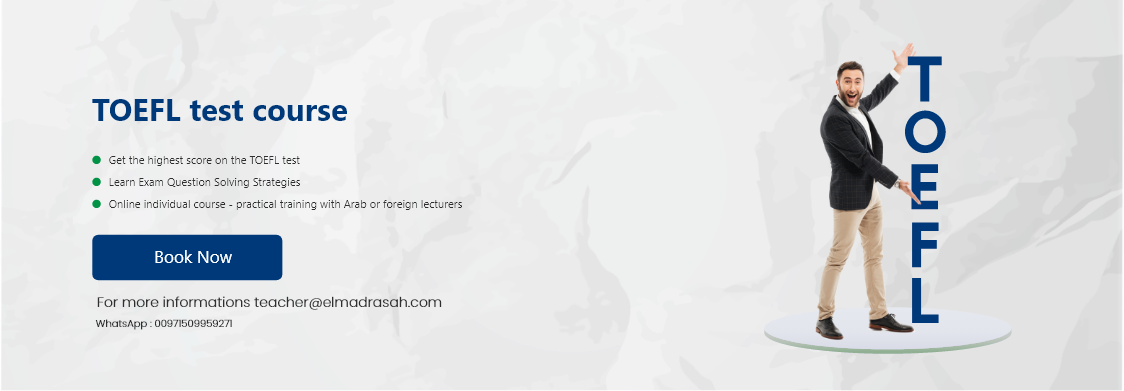
There are numerous language admissions tests students could take annually to enrol into university. Among all tests, ilets and tofel are the most popular and accepted world wide. Both tests are designed to show the detailed language skills of the academic students. or any non native speaker who wants to evaluate his language proficiency.
So what should you know about them? In this article we will make a basic comparison between the two tests to make it easier for you to choose!
What is the IELTS test?
The ielts test is the international system for measuring English language proficiency. The IELTS test is the world’s most popular English language test for study, work and immigration purposes, with three million ielts tests taken throughout the year.
Ielts results are accepted by more than 11,000 institutions in 140 countries around the world, including educational institutions, companies, professional institutions and government agencies.
The content of the ielts test has been developed by an international team of experts, and the test undergoes extensive research to ensure that it remains fair and impartial to all applicants, regardless of nationality, cultural and social background, gender, lifestyle or location.
You can take the IELTS Academic or IELTS General Training test, which depends on the institution you are applying to and your future plans.
IELTS test components
The ielts test is a test that measures all main language skills: (listening, reading, writing and speaking). The listening, reading and writing exams are taken on the same day one after the other, with no breaks in between.
As for the speaking exam, it can be on the same day as the three exams, or within 3 to 7 days before or after those exams. The total time taken for the IELTS test – with its exams – is less than three hours.
What makes the composition of the IELTS test fairer for test takers?
You deserve a fair chance to do your best. That’s why, unlike other tests, IELTS gives you a quiet room to take an individual speaking test without any distractions or interruptions.
IELTS also understands that people use different ways to answer questions. For example, in the IELTS test, you can answer the questions in the reading or writing test in the order that suits you. You can also make changes to your answers in the reading test during the hour designated for the test, and modify your answers in the writing test during the hour designated for that test.
ielts or tofel which one to take ?
Comparing between IELTS or TOFEL is the test you need to study in European, Canadian and American universities. There are thousands of reputable universities and colleges globally that accept IELTS results as proof of your English language proficiency.
It is the required test for professionals – IELTS results are accepted by professional accreditation and registration bodies in many fields, such as accounting, engineering, law, medicine, nursing, pharmacy and teaching staff in many countries.
This means that after you finish your studies, you may need to take the IELTS test in order to obtain a professional registration in an English speaking country. If you have previously taken the IELTS test for university admission, you will be familiar with the components and method of the test when you take it again for professional registration.
It is the test required for immigration too, the IELTS test, the most required English language test by governments in countries around the world in order to obtain permanent residence.
It is famous that the governments of the United Kingdom, Australia, Canada and New Zealand accept IELTS results.
And it’s also the fairest test for you – did you know that IELTS is the single most important English language test in which the speaking test is taken through a one-on-one interview with the examinee in a private room, where you are not interrupted or distracted by any of the other test takers ?
No computers, no technical issues and no distractions during testing.
What is tofel?
The tofel test is known as the Test of English as a Second Language for Non-Native Speakers, or in its literal meaning: Test of English as Foreign Language, and it is an international test that aims to measure the extent to which the examinee is proficient in the English language. It should be noted that the test represents a real gateway to the majority of universities in the world, whether those in the United States of America or in Europe.
The tofel test consists of two types:
Tofel Internet Based Test (IBT):
In it, the applicant is tested online in all sections of the exam, and it is one of the most popular types of tofel and is highly required in most American universities.
It is about 4½ hours long, and its scores range from 0 to 120.
The tofel paper-based test (Institutional Testing Program), known for its acronym (ITP): in which the applicant is tested by writing, it is less prevalent than the online test. It has a duration of 3½ hours and its scores range from 310 to 677.
Which is easier, IELTS or TOEFL?
The ultimate repeated question, which is more easier or what test you should take!
Before deciding your final answer you need to know that, we will try to summarise some of the differences between the two tests, but if you need more details you could check this article in our blog,
Understanding the Exam Formats: IELTS vs. TOEFL
Navigating the world of English language proficiency exams can be a daunting task, especially when faced with choices like the IELTS (International English Language Testing System) and TOEFL (Test of English as a Foreign Language). Both exams are widely recognized and accepted by academic institutions and employers globally. In this article, we will delve into the exam formats of IELTS and TOEFL, providing a comprehensive understanding of the distinctive structures that test-takers encounter.
IELTS Exam Format:
The IELTS exam is divided into four sections, each designed to evaluate different language skills:
- Listening (30 minutes): The listening section consists of four recorded monologues and conversations. Test-takers answer questions based on what they hear. The variety of accents and speech patterns aim to assess their ability to comprehend spoken English in different contexts.
- Reading (60 minutes): The reading section includes three passages, progressively increasing in complexity. Questions range from multiple-choice to sentence completion, aiming to test the ability to understand, analyze, and interpret information.
- Writing (60 minutes): In the writing section, test-takers are required to complete two tasks. Task 1 involves describing visual information, such as a graph or chart, while Task 2 requires writing an essay expressing an opinion or providing a solution to a given issue.
- Speaking (11-14 minutes): The speaking section is a face-to-face interview with an examiner. It comprises three parts: an introduction and interview, a short speech on a familiar topic, and a discussion on more abstract and complex issues.
IELTS has both Academic and General Training modules. The Academic module is suitable for those applying for higher education or professional registration, while the General Training module is intended for those seeking work or immigration in English-speaking countries.
TOEFL Exam Format:
The TOEFL exam is entirely computer-based and is divided into four sections:
- Reading (54–72 minutes): The reading section consists of three to four passages, each followed by a set of questions. Test-takers are required to answer questions based on their comprehension of the passages.
- Listening (41–57 minutes): The listening section includes lectures, discussions, and conversations, followed by related questions. Test-takers listen to audio recordings and respond to questions assessing their understanding of spoken English.
- Speaking (17 minutes): In the speaking section, test-takers respond to six tasks. These tasks involve expressing opinions, summarizing information, and participating in discussions. Responses are recorded and evaluated by human raters.
- Writing (50 minutes): The writing section consists of two tasks. In Task 1, test-takers read a passage, listen to a lecture, and then write a response summarizing the information. In Task 2, they write an essay expressing and supporting their opinion on a given topic.
Key Differences:
One significant difference between the two formats is the speaking component. IELTS incorporates a face-to-face interview with an examiner, fostering a more interactive conversation. TOEFL, on the other hand, records responses to speaking prompts, eliminating the direct interaction with an examiner.
Another notable distinction lies in the content of the listening and reading sections. TOEFL often includes North American accents, providing exposure to a range of English dialects, while IELTS incorporates accents from various English-speaking countries globally.
Understanding the exam formats of IELTS and TOEFL is crucial for test-takers to prepare effectively. While both exams aim to assess English language proficiency, the variations in format cater to different preferences and situations. Consider your strengths, weaknesses, and the requirements of your intended institutions or employers to make an informed decision about which exam aligns best with your goals.
the Differences Between the IELTS and TOEFL Tests;
- The American accent is dominant in the TOEFL test, while English (British) is the most common in IELTS.
- There are some American universities that require TOEFL only, and there are some British or European universities that accept IELTS only, so it is important to review the universities that you intend to apply to first and find out which type of test is acceptable to them.
- There is a lot of material available to study for both exams, but online IELTS materials are relatively more popular than TOEFL.
- If you are still confused about which test will be suitable for you and which matches your language skills you could check out, https://en.elmadrasah.com/en/ courses package and seek academic advice from our Elite tutors!
- In elmadrasah.com we are not only serving online language courses, we are an innovative platform aimed to empower each student we have, to achieve his target and reach his dreams!
- We follow-up constantly with our students 24/7
To reach us out:
Email : [email protected]
Scoring Systems Unveiled: IELTS and TOEFL Contrasts
Scoring systems play a pivotal role in English language proficiency exams, determining the level of proficiency a test-taker has achieved. Two widely accepted exams, IELTS (International English Language Testing System) and TOEFL (Test of English as a Foreign Language), employ distinct scoring methodologies. In this article, we will delve into the scoring systems of IELTS and TOEFL, unveiling the contrasts and nuances that define each assessment.
IELTS Scoring System:
IELTS scores range from 0 to 9, with half-point increments. Each of the four sections – Listening, Reading, Writing, and Speaking – is scored individually, and the final band score is an average of these section scores. The overall band score provides a comprehensive measure of a candidate’s English language proficiency.
Here is a breakdown of the IELTS scoring system:
- Band Score 9: Expert User
- Band Score 8: Very Good User
- Band Score 7: Good User
- Band Score 6: Competent User
- Band Score 5: Modest User
- Band Score 4: Limited User
- Band Score 3: Extremely Limited User
- Band Score 2: Intermittent User
- Band Score 1: Non-User
- Band Score 0: Did Not Attempt the Test
- Each section is designed to assess specific language skills, and the band scores provide a detailed evaluation of a candidate’s abilities in listening, reading, writing, and speaking.
TOEFL Scoring System:
TOEFL, in contrast, uses a scoring system ranging from 0 to 120. The four sections – Reading, Listening, Speaking, and Writing – are scored separately. The sum of these section scores determines the overall TOEFL score.
Here is a breakdown of the TOEFL scoring system:
- Reading Section (0-30 points): Measures the ability to understand academic texts.
- Listening Section (0-30 points): Assesses the ability to understand spoken English in academic settings.
- Speaking Section (0-30 points): Evaluates the ability to speak English coherently and effectively.
- Writing Section (0-30 points): Assesses the ability to write in English, expressing and supporting ideas.
The overall TOEFL score is the sum of the individual section scores, with a maximum total score of 120 points.
Comparative Analysis:
While both IELTS and TOEFL aim to assess English language proficiency, the different scoring systems can influence how test-takers perceive their performance.
IELTS offers a more nuanced band score, providing a detailed breakdown of strengths and weaknesses in each language skill. This allows candidates to understand specific areas for improvement.
TOEFL’s cumulative scoring system simplifies the overall assessment, offering a single total score. This can be advantageous for candidates who prefer a straightforward evaluation without the need to focus on individual section scores.
Understanding the scoring systems of IELTS and TOEFL is crucial for test-takers as they prepare for these exams. The nuanced band scores of IELTS offer detailed insights into language proficiency, while TOEFL’s cumulative scoring provides a comprehensive overall evaluation. Test-takers should consider their preferences, the requirements of their intended institutions or employers, and the scoring system that aligns best with their goals when choosing between IELTS and TOEFL. Ultimately, both exams serve as valuable tools for assessing and demonstrating English language proficiency on a global scale.
Which is more scoring ielts or tofel?
tofel and ielts Scoring conversion schedule according to CEFR Equivalence system shows that scoring system for both and they nearly equal :
| TOEFL | IELTS | CEFR Level |
| 0-17 | A1 (beginner) | |
| 18-55 | 0-4 | A2 (elementary) |
| 56-86 | 4.5-5 | B1 (intermediary) |
| 87-109 | 5.5-6.5 | B2 (upper intermediary) |
| 110-120 | 7-8 | C1 (advanced) |
| – | 8-9 | C2 (Expert) |
Besides both tests have well respected reputations and are vastly accepted, they do have differences in their approaches, structure and content. Based on it, you should think carefully about which one you’ll choose to take.
TOFEL :
- speaking part formed of (listening to a recording on the computer)
- The writing part is based on answering questions on a computer.
- 4 tests for the 4 parts (speaking, writing, listening, reading);
- 3 hours long;
- 120-point scoring max
- Average difficulty.
IELTS :
- Speaking part is done with an examinator, a one-on-one exam
- The writing part is done on a bubble sheet.
- 1 test for the 4 parts
- 2 hours and 245min
- 0-to-9-point scoring max
- High difficulty.
Which Test to Choose? Factors to Consider in IELTS and TOEFL Selection
Choosing between the IELTS (International English Language Testing System) and TOEFL (Test of English as a Foreign Language) is a significant decision for individuals aspiring to showcase their English language proficiency. Each exam comes with its own set of characteristics, and selecting the one that aligns best with your goals requires careful consideration. In this article, we will explore the factors to consider when deciding between IELTS and TOEFL.
Institutional Requirements:
One of the primary factors to consider is the specific requirements of the institutions you are applying to. Different universities and organizations may have preferences for one exam over the other. Research the admission or employment criteria of your target institutions to ensure you choose the exam that meets their expectations.
Geographical Preferences:
Geographical location can influence the choice between IELTS and TOEFL. While both exams are widely accepted globally, IELTS is often favored in the United Kingdom, Australia, and Canada, while TOEFL is more commonly accepted in the United States. If you have a particular destination in mind, consider the regional preferences of that location.
Exam Format Preferences:
The format of the exams varies significantly. If you prefer a face-to-face speaking component, IELTS might be more suitable, as it includes a live interview with an examiner. On the other hand, if you are comfortable with computer-based assessments, TOEFL, which is entirely computer-based, might be your preferred choice.
Speaking Component Comfort:
Consider your comfort level with the speaking component. IELTS involves a face-to-face interview with an examiner, fostering a more interactive and conversational experience. TOEFL, in contrast, records responses to speaking prompts, eliminating direct interaction with an examiner. Choose the format that aligns with your speaking preferences.
Accent Exposure:
Both exams expose test-takers to a variety of English accents, but the accent exposure differs. TOEFL tends to incorporate a broader array of North American accents, including American, Canadian, and some regional dialects. IELTS, while also featuring diverse accents, may include more accents from English-speaking countries globally. Consider which accent exposure you are more comfortable with.
Test Dates and Availability:
Check the test dates and availability in your region. Some areas may offer more frequent test dates for one exam over the other. Consider the convenience of scheduling and ensure that the exam you choose aligns with your timeline for application submissions.
Scoring System Understanding:
Understanding the scoring systems of both exams is crucial. If you prefer a more detailed breakdown of your language proficiency, IELTS provides band scores for each section. If you prefer a cumulative score without focusing on individual sections, TOEFL’s total score might be more suitable.
Personal Comfort and Familiarity:
Ultimately, consider your personal comfort and familiarity with each exam. Take practice tests for both IELTS and TOEFL to get a sense of the format, question types, and overall experience. Your confidence and comfort level with a particular exam can significantly impact your performance.
Choosing between IELTS and TOEFL is a personal decision that should align with your academic and career goals. Consider the requirements of your target institutions, your geographic preferences, the exam format that suits you best, and your comfort level with the speaking component. By weighing these factors, you can make an informed decision that enhances your chances of success in demonstrating your English language proficiency.
By the end of this article, we tried to highlight some crucial points about the language test, in a short detailed information, hoping we will enlighten you more about the core of the two tests and help you make the proper decision in taking ielts or tofel !

















